Thoughts on Yin-Yang
This article was previously published in the North American Journal of Oriental Medicine (NAJOM). It is reprinted here with the kind permission of NAJOM.
“When diagnosing and treating disease, we must first of all differentiate between yin and yang. This is simply the most important principle of medicine. If the physician correctly differentiates yin and yang, the treatment will never be accompanied by side effects. All of the myriad ways of practicing medicine, therefore, can be summed up in two words: yin and yang, and that is all there is to it! There is the yin-yang of symptoms, there is the yin-yang of pulses, and there is the yin-yang of herbs.” Zhang Jingyue, noted Ming dynasty physician (Fruehauf, 2007, p.52)
Lately I find myself thinking about yin-yang much of the time. I believe this is due to my recent study of the Sichuan Fire Spirit School of herbal prescribing and its emphasis on the restoration of the yang. In this article I will share some of my recent thoughts, including why I think this focus on the yang is important.
Before I started my TCM training I had read Alan Watts’ book Tao The Watercourse Way. In it he explained that the polarity of yin-yang in East Asia was conceived of differently from our various polarities in the West. Here we can collectively hold the foolish notion of good overcoming evil in an ultimate sense, putting evil forever out of business. In East Asia the philosophy holds that yin and yang are like the poles of a bar magnet. If we attempt to remove the “evil” north pole of the magnet by cutting it off, we discover that along the edge of our cut a new north pole has been created. So it is with yin and yang , a dynamic dancing interplay of inextricably linked forces.
I was profoundly disappointed in 1995 in the first semester of TCM theory when I discovered that the twenty minutes the teacher gave to presenting yin-yang was to be the sum total of the time we would devote to this foundational concept. I was flabbergasted and contemplated dropping out of the program. Heiner Fruehauf, Ph.D., L.Ac., in the same book from which the opening quote is drawn, tells the story of encountering an elderly, respected herbalist in Sichuan and asking him what he spent his time studying. In asking he was expecting the herbalist to say he had finally understood some arcane point in one of the classics; instead the gentleman said that he was trying to understand yin and yang. He was still working on it after more than sixty years of practice—my TCM theory teacher dispensed with it in a mere twenty minutes. We have a long way to go in our education mission.
In the Sichuan Fire Spirit philosophy the argument is NOT that yang is more important than yin, but simply that yang leads. As an example we can eat all the yin-nourishing foods we like, but without the yang of the digestion the food will just sit in our gut doing no good. So yang is seen as a mobilizer of sorts. Remember, the first hexagram in the Yi Jing has all six lines as yang. This is no accidental arrangement of the hexagrams; it expresses a key point of philosophy. In this style of herbalism aconite, cinnamon, and ginger formulas are often given (Sini tang, Fuzi lizhong tang, Zhenwu tang...), even in many instances when TCM-trained practitioners would prescribe yin-nourishing formulas. (See endnotes for ways to access Dr. Fruehauf’s scholarship on this philosophy.)
I have been assisted in my investigations of yin-yang by rereading Humans in Universe by R. Buckminster Fuller and Anwar Dil. The book is an edited transcript of a conversation between the two men with various appendices added. For those of you unfamiliar with Buckminster “Bucky” Fuller (1895-1983), let me simply say that I believe history will show him to be one of the most significant figures of the last century. Fuller made important contributions in philosophy, design, architecture, cartography, mathematics, and engineering. Even in our own field his work influenced Dr. Yoshio Manaka and helped him develop his unique ideas on the eight extraordinary meridians. This Fuller-Dil book covers all the essential points of Fuller’s work. Fuller explains in the book that he never set out to address problems in the various fields in which he worked; he sought instead something much broader—nature’s organizing and operating principles. Students of AOM will recognize this as essentially a Taoist stance. Now when I look at this Fuller-Dil book, years after I first read it, I see a yin-yang discussion in its many guises. Fuller points out that in nature tension and compression always and only co-exist, concavity and convexity always and only co-exist, radiation and gravity always and only co-exist and so on. It is no stretch to translate this as: Yin and yang always and only co-exist.
Lately I have been thinking about the Big Bang. If our astrophysicists are correct, what does the Big Bang have to say about yin-yang? My first thought was that the explosion was an instance of “pure yang”. However if there had been an initial burst of “pure yang” with no yin, there never would have been a yin at all. Yin and yang always and only coexist, to borrow Fuller’s language. In the Big Bang, however, clearly yang plays the lead role, just as in the Sichuan Fire Spirit philosophy. Also in this consideration of the Big Bang we can see illustrated another of Fuller’s teachings: Unity is always plural and at minimum two.
I have read Dr. Kobayashi’s book on his Shaku-jyu therapy as well as the many NAJOM articles detailing this style of acupuncture. In his work I find a sort of acupuncture correlate to the Sichuan Fire Spirit school of thought. It is clear that in his thinking preservation of yang is paramount. Above I mentioned the first hexagram in the Yi Jing, and it is interesting to me that Dr. Kobayashi is a noted Yi Jing scholar. When someone of his experience thinks and practices in this way, it tends to lend me philosophical support in my studies in this yang-focused herbal approach.
I had an initial hurdle to overcome when considering the emphasis on preservation of the yang. This focus on yang’s leading role bumped up into a sort of Libran dream of perfect balance and symmetry between yin and yang. It is a feminist perspective almost. In me was a desire to have a system where yang can lead some of the time, and yin some of the time. When Fuller discusses radiation and gravity, he provides the clarity and perspective I sought. He explains that they are absolutely equal forces but that gravity is twice as efficient as radiation. Without this being the case we would not have the physical universe as we know it. If we are to overlay gravity and radiation on yin and yang, gravity will be yin and radiation yang. Gravity is a coherent force, which is a yin function. Although tangential to our discussion here, I want to point out that Fuller said love is metaphysical gravity, i.e., the force that holds all together. He felt every physical law had a metaphysical correlate.
It occurred to me that if gravity (yin) is more “efficient”, then radiation (yang), in a sense, needs more therapeutic support (since on its own, like radiation, it is relatively inefficient). This is a bit tricky, I will admit, trying to jump from cosmological organizing principle to clinical strategy, but it works for me to make sense of why focus on the preservation and restoration of the yang is important. Another way of looking at it is that yin is form and yang is energy. The nature of energy/radiation is dissipative while form maintains its “pattern integrity,” to steal a key phrase from Fuller. Dissipation is clearly inefficient relative to maintenance of form.
Moxibustion warrants at least a brief mention since we are discussing the clinical importance of yang. Moxibustion is the perfect adjunctive treatment to go with the focus of the Sichuan Fire Spirit School. We all know the character for acupuncture contains the character for moxibustion, i.e., they were seen in ancient times as inseparable. Although the modern Japanese and Chinese have different styles and ideas about moxa, if one stays with the simple image of fire being used on the body, then one recognizes this is yang being mobilized in healing.
As I have attempted to bring this focus into my acupuncture practice, it is primarily through an increased reliance on moxa that I have done so. I also made a replacement for shiunko with aconite and ginger instead of the typical angelica and lithospermum; I use a thin layer of this salve under my moxa cones when I want a decided warming action. Because the focus of the Sichuan Spirit School is actually on using aconite, ginger, and cinnamon to restore Earth’s ability to “contain” (deficient heat can flare up in the body because this “containment of the earth” is weak), I have also started using more earth points in my treatments. This fits nicely with a comment made by Baba Sensei in the summer of 2007 in Tokyo; he told us that when we have a cold patient we should needle earth points. Using these earth-yuan source points (we are on the yin meridians in this discussion), according to the theory, links to ministerial fire. It is the San Jiao function to facilitate the movement of yuan qi into all the organ-networks. This occurs through the source points, and using these same points connects us back into the ministerial fire we need to warm up the cold.
To summarize, through my readings of Fuller I have arrived at a place of philosophical peace with this idea of clinical focus on the yang. I offer my thoughts in this article. I do not suffer under the delusion that I am a philosopher or scholar, or even a practitioner of any note. At best I am a committed student. I realize it is entirely possible that I will look back on this article in five years and cringe with a strong dose of embarrassment; still I am inclined to put it out there with the hope it will trigger some thoughts in readers. I invite all comments and criticisms.
Courses By This Teacher
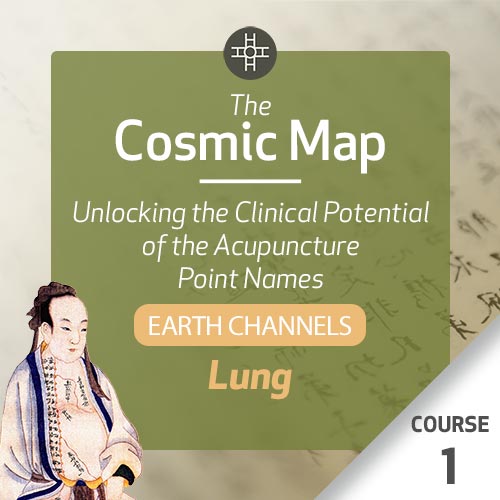
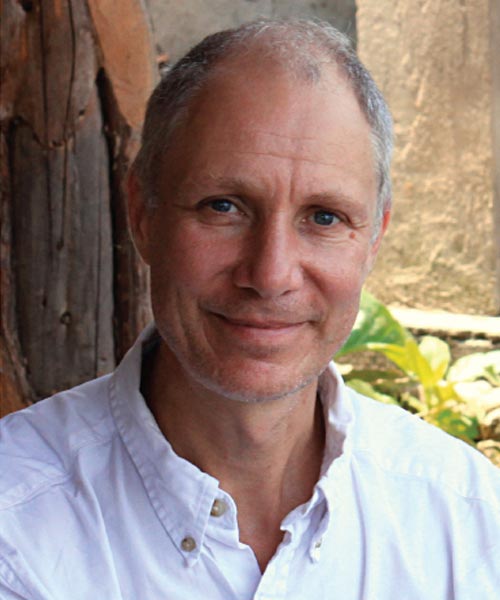
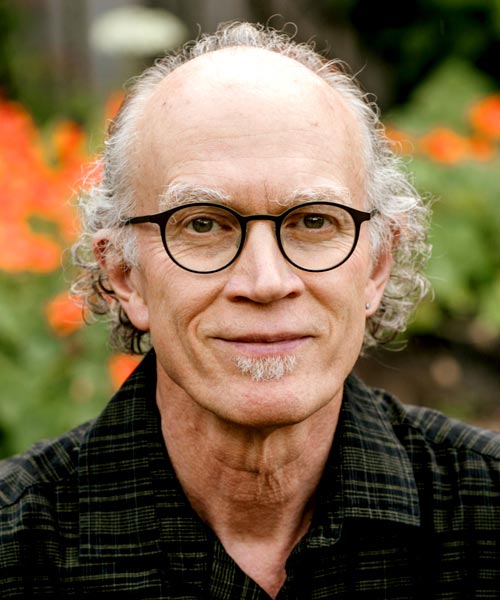
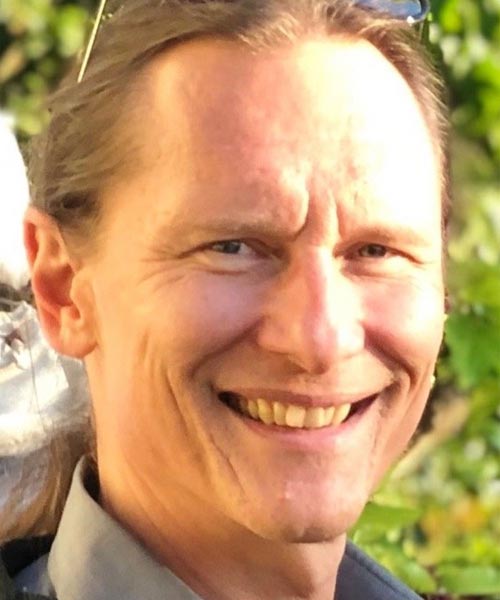
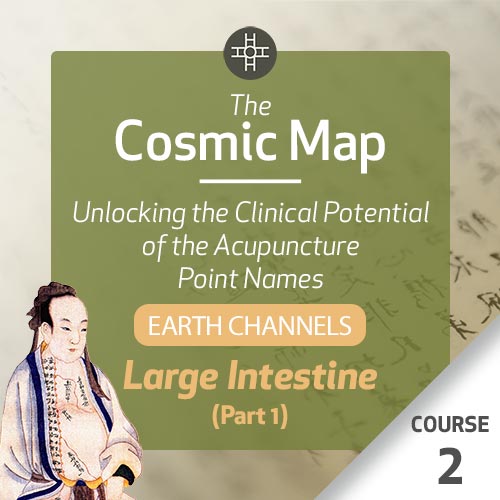



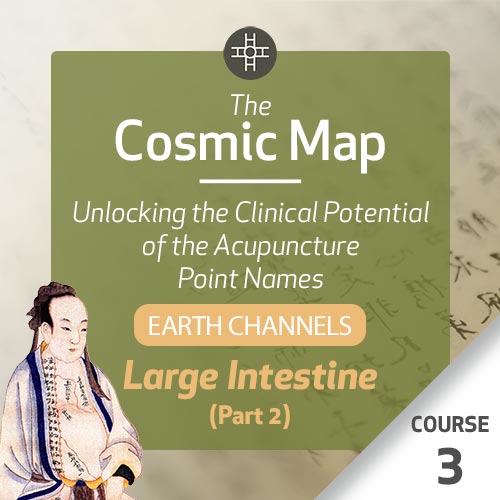



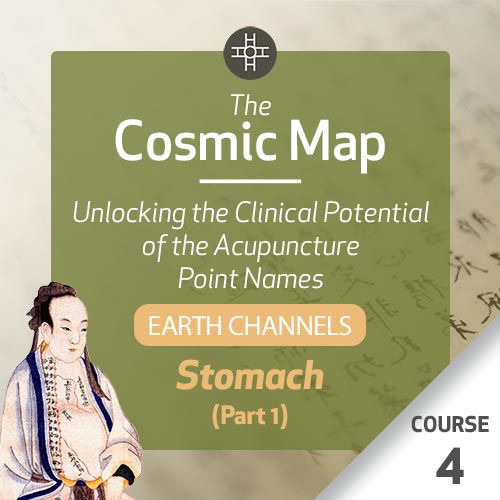



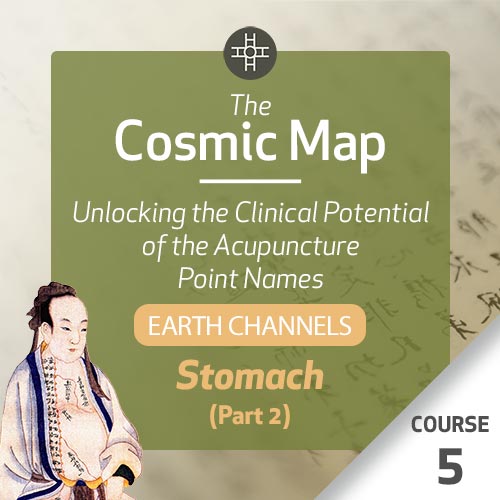



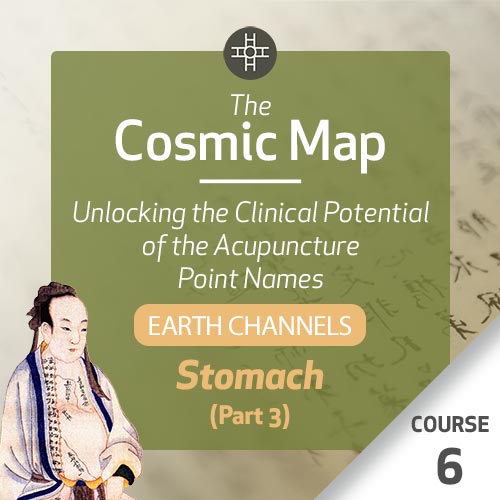



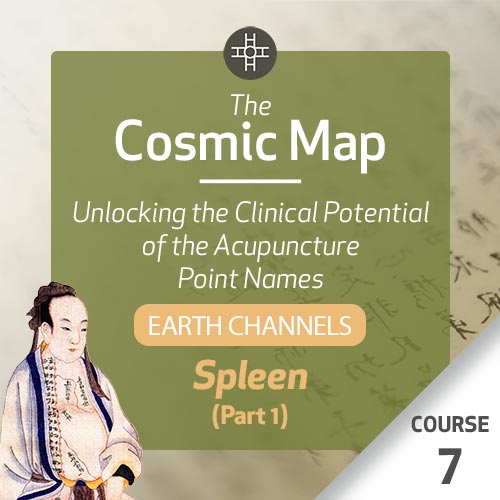



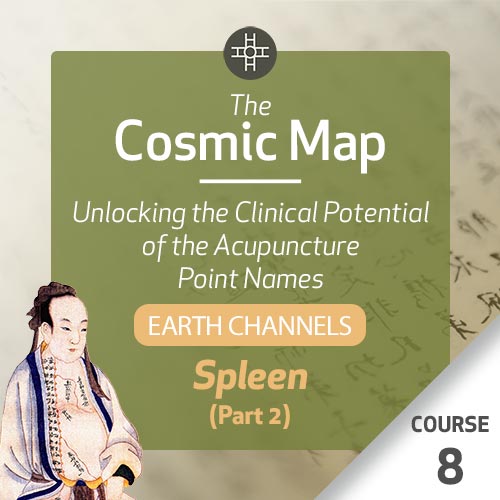



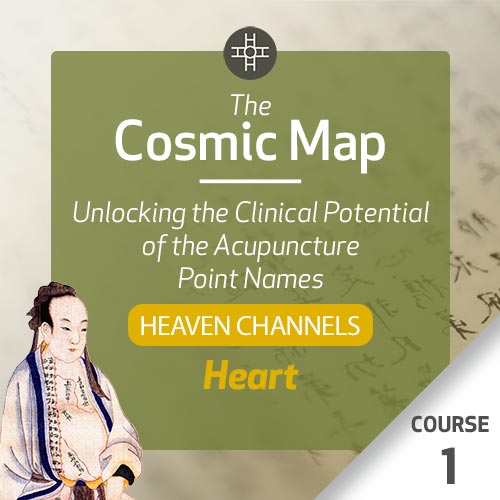



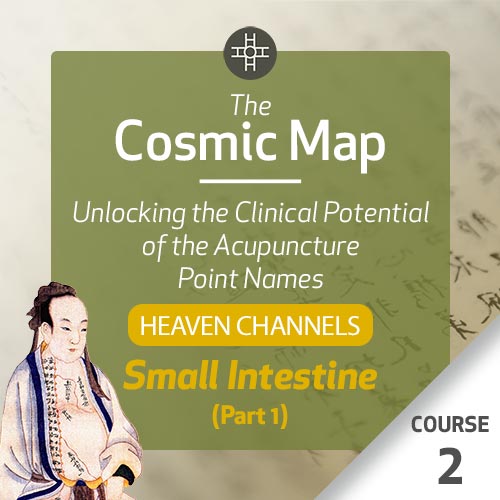



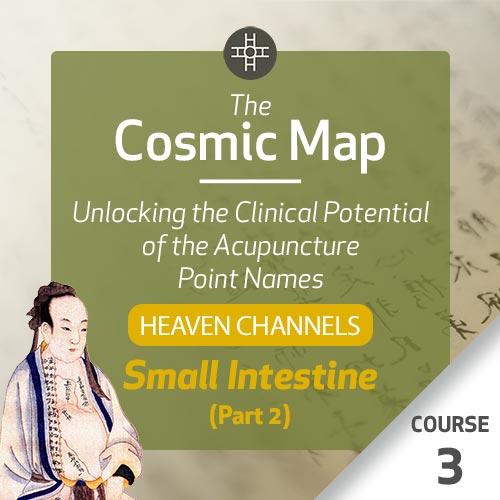



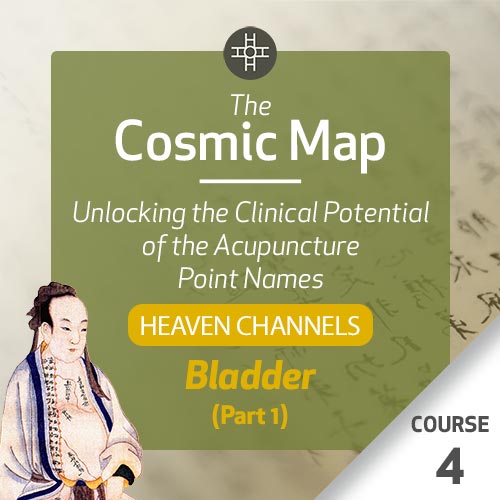



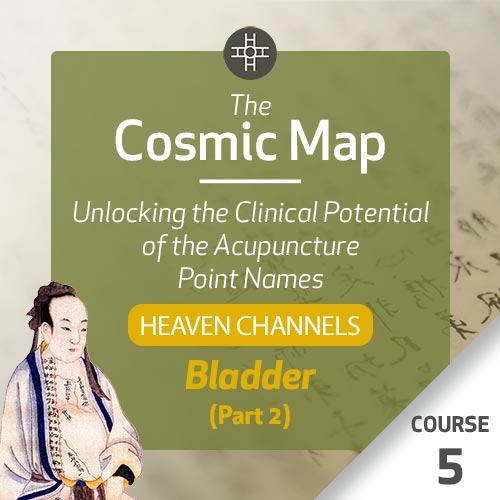



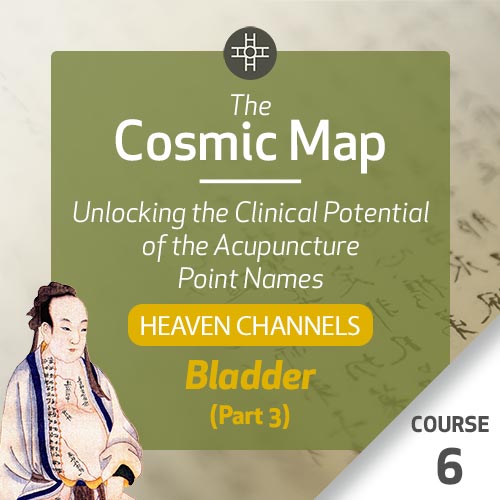



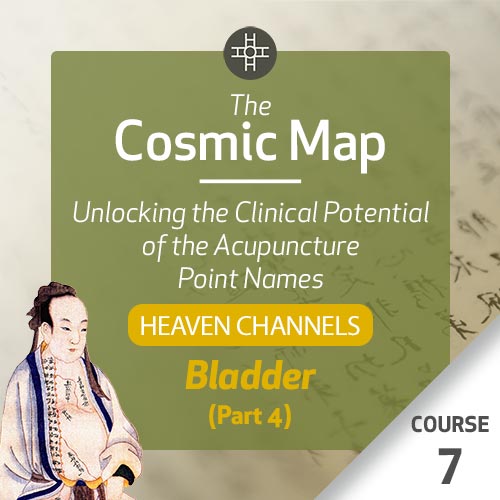



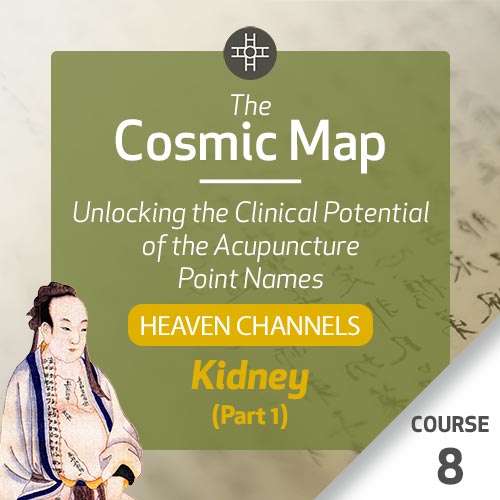



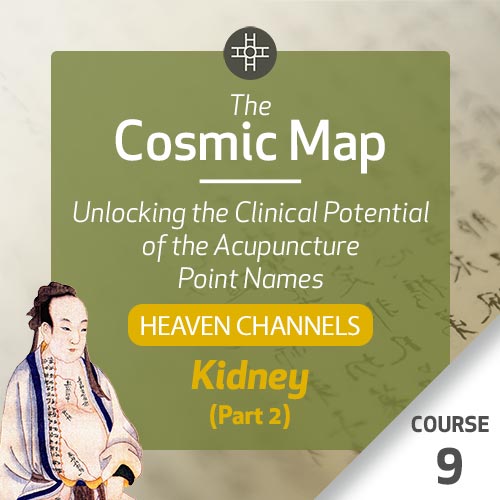



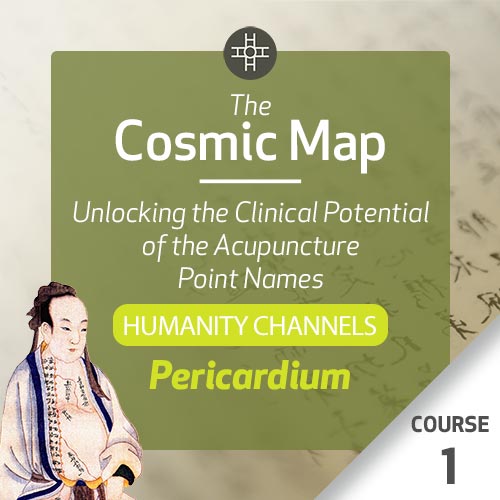



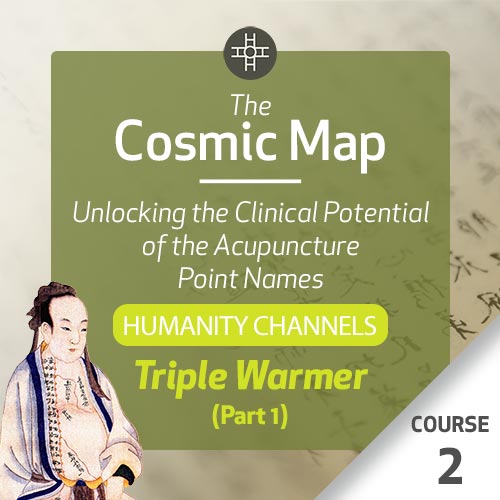



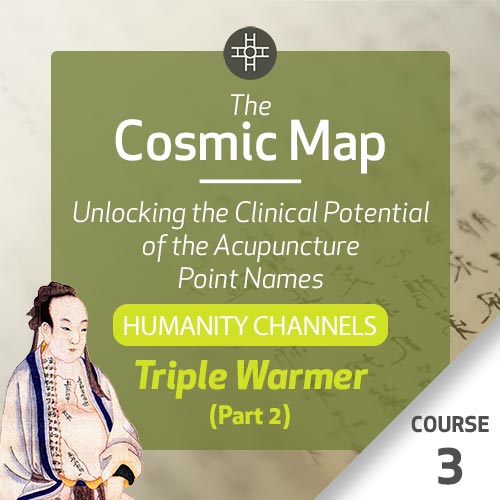



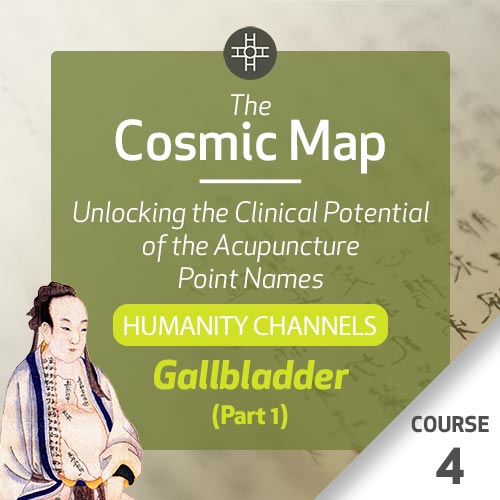



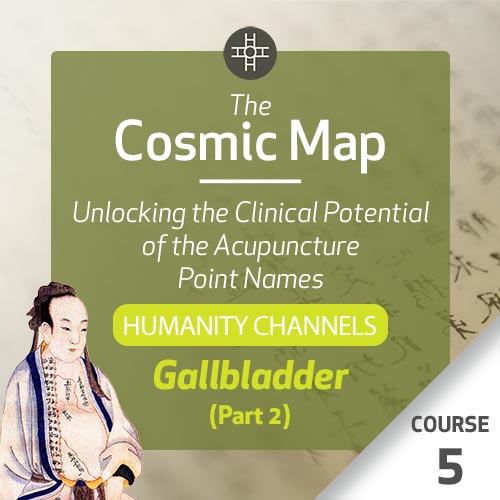



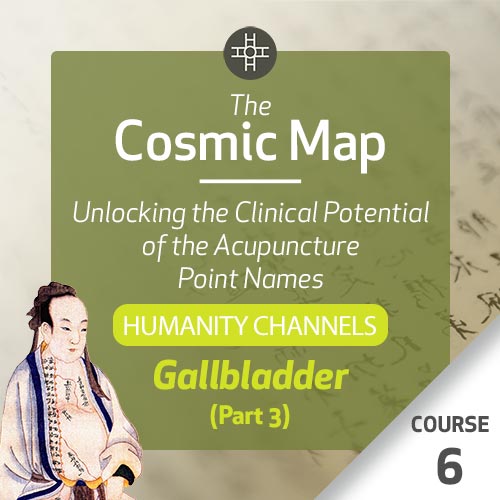



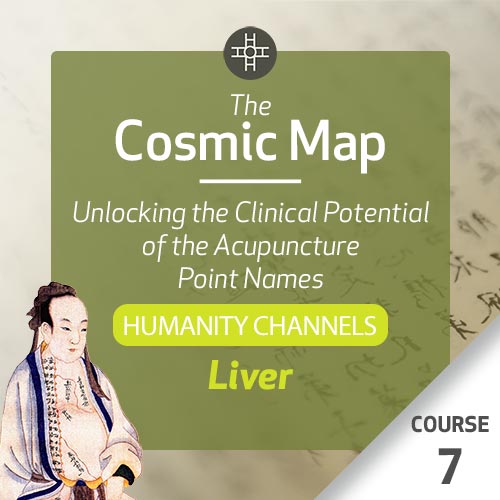



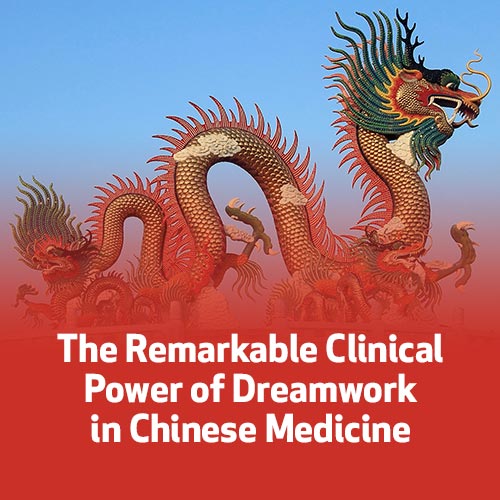
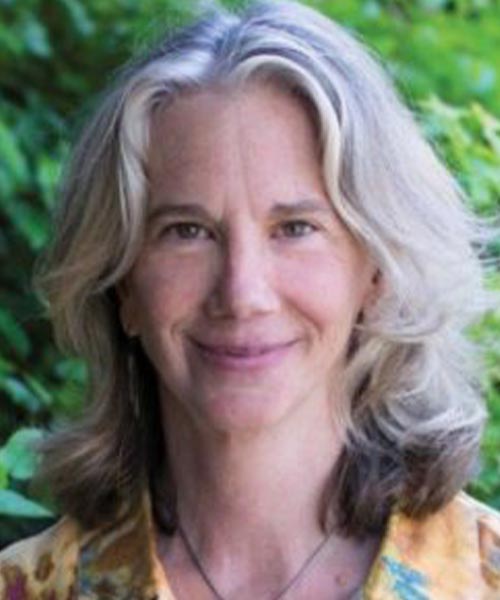



The Cosmic Map: Unlocking the Clinical Potential of the Acupuncture Point Names, Part 1: Earth Channels - Course 1
Lung
with Bob Quinn
See In StoreOverview
This course is designed to further the lifelong learner’s journey as they deepen their mastery of acupuncture point selections based on the profound information embedded in their classical names. Seasoned practitioners, students, and laypeople will all find value in this course.
Heiner Fruehauf will analyze the original meaning of each point name on the Lung channel in its multilayered complexity. The ancient acupuncture point names not only serve as mnemonic reminders about the location of each point, but also contain significant information revealing the unique energetic qualities and highly specific physiology and pathology of each point.
Heiner will tease out each layer of meaning through multiple translations. Relevant clinical context will be provided by the presentation of case examples or experience-based comments by senior acupuncturists Bob Quinn and Michael Berletich.
Heiner will share decades of research into the nuanced qualities of the acupuncture points, and instill in participants a tangible feel for their unique nature and energetic qualities.
With this base of knowledge, participants can stand on firm ground while being flexible in their ability to more deeply understand and select acupuncture points that can effectively treat the complex physical, mental/emotional and spiritual issues we encounter in our out-of-balance world.
Learning Objectives
- Elucidate the symbolism and story of the ancient acupuncture point names that serve as mnemonic reminders about their location, contain significant information, and reveal their unique energetic qualities and highly specific physiology and pathology.
- Describe the symbolic nature of the Lung channel and analyze the original meaning of the organ, meridian and point names in all their multilayered complexity including the cosmologic, energetic and physical viewpoints.
- Present the points of the Lung meridian so participants can understand how to hone their ability to select the most suitable points to effectively treat complex physical, mental/emotional and spiritual issues we encounter in our out-of-balance world.
- Discuss the physiologic actions, pathologic presentations and clinical applications of the Lung point represented by their name translations and their classical text indications with clinical and case examples.
Your Teachers

Heiner Fruehauf
Heiner Fruehauf is the Founding Professor of the College of Classical Chinese Medicine at National University of Natural Medicine (NUNM) in Portland, Oregon. As a practitioner, Dr. Fruehauf focuses on the complementary treatment of difficult and recalcitrant diseases, including cancer, chronic respiratory and digestive disorders, and inflammation of the nervous system.

Bob Quinn
Bob Quinn, DAOM, L.Ac. has been a full-time Associate Professor of Chinese Medicine at National University of Natural Medicine in Portland since 2009; before that, he taught and supervised at the Oregon College of Oriental Medicine. He first entered acupuncture practice in 1998 with a master’s degree from OCOM, and later returned to earn his doctoral degree in Chinese medicine in 2008.

Michael Berletich
Dr. Michael Berletich has been teaching for over 30 years. He received his Masters in Chinese Medicine (2005) and his clinical Doctorate in Chinese medicine (2016) from OCOM. He's worked the past 23 years as Professor, Clinician, Department Chair and Dean. He also maintains a busy private practice.
Categories
Tags
The Cosmic Map: Unlocking the Clinical Potential of the Acupuncture Point Names, Part 1: Earth Channels - Course 2
Large Intestine Part 1
with Bob Quinn
See In StoreOverview
This course is designed to further the lifelong learners’ journey as they deepen their mastery of acupuncture point selections based on the profound information embedded in their classical names. Seasoned practitioners, students, and laypeople will all find value in this course.
Heiner Fruehauf will analyze the original meaning of each point name on the Large Intestine channel in its multilayered complexity. The ancient acupuncture point names not only serve as mnemonic reminders about the location of each point, but also contain significant information revealing the unique energetic qualities and highly specific physiology and pathology of each point.
Heiner will tease out each layer of meaning through multiple translations. Relevant clinical context will be provided by the presentation of case examples or experience-based comments by senior acupuncturists Bob Quinn and Michael Berletich.
Heiner will share decades of research into the nuanced qualities of the acupuncture points, and instill in participants a tangible feel for their unique nature and energetic qualities.
With this base of knowledge, participants can stand on firm ground while being flexible in their ability to more deeply understand and select acupuncture points that can effectively treat the complex physical, mental/emotional and spiritual issues we encounter in our out-of-balance world.
Learning Objectives
- Present Large Intestine points so participants can understand how to hone their ability to select the most suitable points to effectively treat complex physical, mental/emotional and spiritual issues we encounter in our out-of-balance world.
- Discuss the physiologic actions, pathologic presentations and clinical applications of the Large Intestine point represented by their name translations and their classical text indications with clinical and case examples
- Elucidate the symbolism and story of the ancient acupuncture point names that serve as mnemonic reminders about their location, contain significant information, and reveal their unique energetic qualities and highly specific physiology and pathology
- Describe the symbolic nature of the Large Intestine channel and analyze the original meaning of the organ, meridian and point names in all their multilayered complexity including the cosmologic, energetic and physical viewpoints
Your Teachers

Bob Quinn
Bob Quinn, DAOM, L.Ac. has been a full-time Associate Professor of Chinese Medicine at National University of Natural Medicine in Portland since 2009; before that, he taught and supervised at the Oregon College of Oriental Medicine. He first entered acupuncture practice in 1998 with a master’s degree from OCOM, and later returned to earn his doctoral degree in Chinese medicine in 2008.

Heiner Fruehauf
Heiner Fruehauf is the Founding Professor of the College of Classical Chinese Medicine at National University of Natural Medicine (NUNM) in Portland, Oregon. As a practitioner, Dr. Fruehauf focuses on the complementary treatment of difficult and recalcitrant diseases, including cancer, chronic respiratory and digestive disorders, and inflammation of the nervous system.

Michael Berletich
Dr. Michael Berletich has been teaching for over 30 years. He received his Masters in Chinese Medicine (2005) and his clinical Doctorate in Chinese medicine (2016) from OCOM. He's worked the past 23 years as Professor, Clinician, Department Chair and Dean. He also maintains a busy private practice.
Categories
Tags
The Cosmic Map: Unlocking the Clinical Potential of the Acupuncture Point Names, Part 1: Earth Channels - Course 3
Large Intestine Part 2
with Bob Quinn
See In StoreOverview
This course is designed to further the lifelong learners’ journey as they deepen their mastery of acupuncture point selections based on the profound information embedded in their classical names. Seasoned practitioners, students, and laypeople will all find value in this course.
Heiner Fruehauf will analyze the original meaning of each point name on the Large Intestine channel in its multilayered complexity. The ancient acupuncture point names not only serve as mnemonic reminders about the location of each point, but also contain significant information revealing the unique energetic qualities and highly specific physiology and pathology of each point.
Heiner will tease out each layer of meaning through multiple translations. Relevant clinical context will be provided by the presentation of case examples or experience-based comments by senior acupuncturists Bob Quinn and Michael Berletich.
Heiner will share decades of research into the nuanced qualities of the acupuncture points, and instill in participants a tangible feel for their unique nature and energetic qualities.
With this base of knowledge, participants can stand on firm ground while being flexible in their ability to more deeply understand and select acupuncture points that can effectively treat the complex physical, mental/emotional and spiritual issues we encounter in our out-of-balance world.
Learning Objectives
- Discuss the physiologic actions, pathologic presentations and clinical applications of the Large Intestine point represented by their name translations and their classical text indications with clinical and case examples
- Present Large Intestine points so participants can understand how to hone their ability to select the most suitable points to effectively treat complex physical, mental/emotional and spiritual issues we encounter in our out-of-balance world.
- Elucidate the symbolism and story of the ancient acupuncture point names that serve as mnemonic reminders about their location, contain significant information, and reveal their unique energetic qualities and highly specific physiology and pathology
- Describe the symbolic nature of the Large Intestine channel and analyze the original meaning of the organ, meridian and point names in all their multilayered complexity including the cosmologic, energetic and physical viewpoints
Your Teachers

Michael Berletich
Dr. Michael Berletich has been teaching for over 30 years. He received his Masters in Chinese Medicine (2005) and his clinical Doctorate in Chinese medicine (2016) from OCOM. He's worked the past 23 years as Professor, Clinician, Department Chair and Dean. He also maintains a busy private practice.

Bob Quinn
Bob Quinn, DAOM, L.Ac. has been a full-time Associate Professor of Chinese Medicine at National University of Natural Medicine in Portland since 2009; before that, he taught and supervised at the Oregon College of Oriental Medicine. He first entered acupuncture practice in 1998 with a master’s degree from OCOM, and later returned to earn his doctoral degree in Chinese medicine in 2008.

Heiner Fruehauf
Heiner Fruehauf is the Founding Professor of the College of Classical Chinese Medicine at National University of Natural Medicine (NUNM) in Portland, Oregon. As a practitioner, Dr. Fruehauf focuses on the complementary treatment of difficult and recalcitrant diseases, including cancer, chronic respiratory and digestive disorders, and inflammation of the nervous system.
Categories
Tags
The Cosmic Map: Unlocking the Clinical Potential of the Acupuncture Point Names, Part 1: Earth Channels - Course 4
Stomach Part 1
with Bob Quinn
See In StoreOverview
This course is designed to further the lifelong learner’s journey as they deepen their mastery of acupuncture point selections based on the profound information embedded in their classical names. Seasoned practitioners, students, and laypeople will all find value in this course.
Heiner Fruehauf will analyze the original meaning of each point name on the Stomach channel in its multilayered complexity. The ancient acupuncture point names not only serve as mnemonic reminders about the location of each point, but also contain significant information revealing the unique energetic qualities and highly specific physiology and pathology of each point.
Heiner will tease out each layer of meaning through multiple translations. Relevant clinical context will be provided by the presentation of case examples or experience-based comments by senior acupuncturists Bob Quinn and Michael Berletich.
Heiner will share decades of research into the nuanced qualities of the acupuncture points, and instill in participants a tangible feel for their unique nature and energetic qualities.
With this base of knowledge, participants can stand on firm ground while being flexible in their ability to more deeply understand and select acupuncture points that can effectively treat the complex physical, mental/emotional and spiritual issues we encounter in our out-of-balance world.
Learning Objectives
- Present Stomach points so participants can understand how to hone their ability to select the most suitable points to effectively treat complex physical, mental/emotional and spiritual issues we encounter in our out-of-balance world.
- Discuss the physiologic actions, pathologic presentations and clinical applications of the Stomach points represented by their name translations and their classical text indications with clinical and case examples
- Describe the symbolic nature of the Stomach channel and analyze the original meaning of the organ, meridian and point names in all their multilayered complexity including the cosmologic, energetic and physical viewpoints
- Elucidate the symbolism and story of the ancient acupuncture point names that serve as mnemonic reminders about their location, contain significant information, and reveal their unique energetic qualities and highly specific physiology and pathology
Your Teachers

Michael Berletich
Dr. Michael Berletich has been teaching for over 30 years. He received his Masters in Chinese Medicine (2005) and his clinical Doctorate in Chinese medicine (2016) from OCOM. He's worked the past 23 years as Professor, Clinician, Department Chair and Dean. He also maintains a busy private practice.

Heiner Fruehauf
Heiner Fruehauf is the Founding Professor of the College of Classical Chinese Medicine at National University of Natural Medicine (NUNM) in Portland, Oregon. As a practitioner, Dr. Fruehauf focuses on the complementary treatment of difficult and recalcitrant diseases, including cancer, chronic respiratory and digestive disorders, and inflammation of the nervous system.

Bob Quinn
Bob Quinn, DAOM, L.Ac. has been a full-time Associate Professor of Chinese Medicine at National University of Natural Medicine in Portland since 2009; before that, he taught and supervised at the Oregon College of Oriental Medicine. He first entered acupuncture practice in 1998 with a master’s degree from OCOM, and later returned to earn his doctoral degree in Chinese medicine in 2008.
Categories
Tags
The Cosmic Map: Unlocking the Clinical Potential of the Acupuncture Point Names, Part 1: Earth Channels - Course 5
Stomach Part 2
with Bob Quinn
See In StoreOverview
This course is designed to further the lifelong learner’s journey as they deepen their mastery of acupuncture point selections based on the profound information embedded in their classical names. Seasoned practitioners, students, and laypeople will all find value in this course.
Heiner Fruehauf will analyze the original meaning of each point name on the Stomach channel in its multilayered complexity. The ancient acupuncture point names not only serve as mnemonic reminders about the location of each point, but also contain significant information revealing the unique energetic qualities and highly specific physiology and pathology of each point.
Heiner will tease out each layer of meaning through multiple translations. Relevant clinical context will be provided by the presentation of case examples or experience-based comments by senior acupuncturists Bob Quinn and Michael Berletich.
Heiner will share decades of research into the nuanced qualities of the acupuncture points, and instill in participants a tangible feel for their unique nature and energetic qualities.
With this base of knowledge, participants can stand on firm ground while being flexible in their ability to more deeply understand and select acupuncture points that can effectively treat the complex physical, mental/emotional and spiritual issues we encounter in our out-of-balance world.
Learning Objectives
- Present Stomach points so participants can understand how to hone their ability to select the most suitable points to effectively treat complex physical, mental/emotional and spiritual issues we encounter in our out-of-balance world.
- Elucidate the symbolism and story of the ancient acupuncture point names that serve as mnemonic reminders about their location, contain significant information, and reveal their unique energetic qualities and highly specific physiology and pathology.
- Discuss the physiologic actions, pathologic presentations and clinical applications of the Stomach points represented by their name translations and their classical text indications with clinical and case examples.
- Describe the symbolic nature of the Stomach channel and analyze the original meaning of the organ, meridian and point names in all their multilayered complexity including the cosmologic, energetic and physical viewpoints.
Your Teachers

Bob Quinn
Bob Quinn, DAOM, L.Ac. has been a full-time Associate Professor of Chinese Medicine at National University of Natural Medicine in Portland since 2009; before that, he taught and supervised at the Oregon College of Oriental Medicine. He first entered acupuncture practice in 1998 with a master’s degree from OCOM, and later returned to earn his doctoral degree in Chinese medicine in 2008.

Michael Berletich
Dr. Michael Berletich has been teaching for over 30 years. He received his Masters in Chinese Medicine (2005) and his clinical Doctorate in Chinese medicine (2016) from OCOM. He's worked the past 23 years as Professor, Clinician, Department Chair and Dean. He also maintains a busy private practice.

Heiner Fruehauf
Heiner Fruehauf is the Founding Professor of the College of Classical Chinese Medicine at National University of Natural Medicine (NUNM) in Portland, Oregon. As a practitioner, Dr. Fruehauf focuses on the complementary treatment of difficult and recalcitrant diseases, including cancer, chronic respiratory and digestive disorders, and inflammation of the nervous system.
Categories
Tags
The Cosmic Map: Unlocking the Clinical Potential of the Acupuncture Point Names, Part 1: Earth Channels - Course 6
Stomach Part 3
with Bob Quinn
See In StoreOverview
This course is designed to further the lifelong learner’s journey as they deepen their mastery of acupuncture point selections based on the profound information embedded in their classical names. Seasoned practitioners, students, and laypeople will all find value in this course.
Heiner Fruehauf will analyze the original meaning of each point name on the Stomach channel in its multilayered complexity. The ancient acupuncture point names not only serve as mnemonic reminders about the location of each point, but also contain significant information revealing the unique energetic qualities and highly specific physiology and pathology of each point.
Learning Objectives
- Present Stomach points so participants can understand how to hone their ability to select the most suitable points to effectively treat complex physical, mental/emotional and spiritual issues we encounter in our out-of-balance world.
- Elucidate the symbolism and story of the ancient acupuncture point names that serve as mnemonic reminders about their location, contain significant information, and reveal their unique energetic qualities and highly specific physiology and pathology.
- Discuss the physiologic actions, pathologic presentations and clinical applications of the Stomach points represented by their name translations and their classical text indications with clinical and case examples.
- Describe the symbolic nature of the Stomach channel and analyze the original meaning of the organ, meridian and point names in all their multilayered complexity including the cosmologic, energetic and physical viewpoints.
Your Teachers

Bob Quinn
Bob Quinn, DAOM, L.Ac. has been a full-time Associate Professor of Chinese Medicine at National University of Natural Medicine in Portland since 2009; before that, he taught and supervised at the Oregon College of Oriental Medicine. He first entered acupuncture practice in 1998 with a master’s degree from OCOM, and later returned to earn his doctoral degree in Chinese medicine in 2008.

Michael Berletich
Dr. Michael Berletich has been teaching for over 30 years. He received his Masters in Chinese Medicine (2005) and his clinical Doctorate in Chinese medicine (2016) from OCOM. He's worked the past 23 years as Professor, Clinician, Department Chair and Dean. He also maintains a busy private practice.

Heiner Fruehauf
Heiner Fruehauf is the Founding Professor of the College of Classical Chinese Medicine at National University of Natural Medicine (NUNM) in Portland, Oregon. As a practitioner, Dr. Fruehauf focuses on the complementary treatment of difficult and recalcitrant diseases, including cancer, chronic respiratory and digestive disorders, and inflammation of the nervous system.
Categories
Tags
The Cosmic Map: Unlocking the Clinical Potential of the Acupuncture Point Names, Part 1: Earth Channels - Course 7
Spleen Part 1
with Bob Quinn
See In StoreOverview
This course is designed to further the lifelong learner’s journey as they deepen their mastery of acupuncture point selections based on the profound information embedded in their classical names. Seasoned practitioners, students, and laypeople will all find value in this course.
Heiner Fruehauf will analyze the original meaning of each point name on the Spleen channel in its multilayered complexity. The ancient acupuncture point names not only serve as mnemonic reminders about the location of each point, but also contain significant information revealing the unique energetic qualities and highly specific physiology and pathology of each point.
Learning Objectives
- Elucidate the symbolism and story of the ancient acupuncture point names that serve as mnemonic reminders about their location, contain significant information, and reveal their unique energetic qualities and highly specific physiology and pathology
- Discuss the physiologic actions, pathologic presentations and clinical applications of the Spleen points represented by their name translations and their classical text indications with clinical and case examples
- Present Spleen points so participants can understand how to hone their ability to select the most suitable points to effectively treat complex physical, mental/emotional and spiritual issues we encounter in our out-of-balance world.
- Describe the symbolic nature of the Spleen channel and analyze the original meaning of the organ, meridian and point names in all their multilayered complexity including the cosmologic, energetic and physical viewpoints
Your Teachers

Bob Quinn
Bob Quinn, DAOM, L.Ac. has been a full-time Associate Professor of Chinese Medicine at National University of Natural Medicine in Portland since 2009; before that, he taught and supervised at the Oregon College of Oriental Medicine. He first entered acupuncture practice in 1998 with a master’s degree from OCOM, and later returned to earn his doctoral degree in Chinese medicine in 2008.

Michael Berletich
Dr. Michael Berletich has been teaching for over 30 years. He received his Masters in Chinese Medicine (2005) and his clinical Doctorate in Chinese medicine (2016) from OCOM. He's worked the past 23 years as Professor, Clinician, Department Chair and Dean. He also maintains a busy private practice.

Heiner Fruehauf
Heiner Fruehauf is the Founding Professor of the College of Classical Chinese Medicine at National University of Natural Medicine (NUNM) in Portland, Oregon. As a practitioner, Dr. Fruehauf focuses on the complementary treatment of difficult and recalcitrant diseases, including cancer, chronic respiratory and digestive disorders, and inflammation of the nervous system.
Categories
Tags
The Cosmic Map: Unlocking the Clinical Potential of the Acupuncture Point Names, Part 1: Earth Channels - Course 8
Spleen Part 2
with Bob Quinn
See In StoreOverview
This course is designed to further the lifelong learner’s journey as they deepen their mastery of acupuncture point selections based on the profound information embedded in their classical names. Seasoned practitioners, students, and laypeople will all find value in this course.
Heiner Fruehauf will analyze the original meaning of each point name on the Spleen channel in its multilayered complexity. The ancient acupuncture point names not only serve as mnemonic reminders about the location of each point, but also contain significant information revealing the unique energetic qualities and highly specific physiology and pathology of each point.
Learning Objectives
- Discuss the physiologic actions, pathologic presentations and clinical applications of the Spleen points represented by their name translations and their classical text indications with clinical and case examples
- Present Spleen points so participants can understand how to hone their ability to select the most suitable points to effectively treat complex physical, mental/emotional and spiritual issues we encounter in our out-of-balance world.
- Describe the symbolic nature of the Spleen channel and analyze the original meaning of the organ, meridian and point names in all their multilayered complexity including the cosmologic, energetic and physical viewpoints
- Elucidate the symbolism and story of the ancient acupuncture point names that serve as mnemonic reminders about their location, contain significant information, and reveal their unique energetic qualities and highly specific physiology and pathology
Your Teachers

Michael Berletich
Dr. Michael Berletich has been teaching for over 30 years. He received his Masters in Chinese Medicine (2005) and his clinical Doctorate in Chinese medicine (2016) from OCOM. He's worked the past 23 years as Professor, Clinician, Department Chair and Dean. He also maintains a busy private practice.

Heiner Fruehauf
Heiner Fruehauf is the Founding Professor of the College of Classical Chinese Medicine at National University of Natural Medicine (NUNM) in Portland, Oregon. As a practitioner, Dr. Fruehauf focuses on the complementary treatment of difficult and recalcitrant diseases, including cancer, chronic respiratory and digestive disorders, and inflammation of the nervous system.

Bob Quinn
Bob Quinn, DAOM, L.Ac. has been a full-time Associate Professor of Chinese Medicine at National University of Natural Medicine in Portland since 2009; before that, he taught and supervised at the Oregon College of Oriental Medicine. He first entered acupuncture practice in 1998 with a master’s degree from OCOM, and later returned to earn his doctoral degree in Chinese medicine in 2008.
Categories
Tags
The Cosmic Map: Unlocking the Clinical Potential of the Acupuncture Point Names, Part 2: Heaven Channels - Course 1
Heart
with Bob Quinn
See In StoreOverview
This course is designed to further the lifelong learner’s journey as they deepen their mastery of acupuncture point selections based on the profound information embedded in their classical names. Seasoned practitioners, students, and laypeople will all find value in this course.
Heiner Fruehauf will analyze the original meaning of each point name on the Heart channel in its multilayered complexity. The ancient acupuncture point names not only serve as mnemonic reminders about the location of each point, but also contain significant information revealing the unique energetic qualities and highly specific physiology and pathology of each point.
Learning Objectives
- Discuss the physiologic actions, pathologic presentations and clinical applications of the Heart points represented by their name translations and their classical text indications with clinical and case examples.
- Elucidate the symbolism and story of the ancient acupuncture point names that serve as mnemonic reminders about their location, contain significant information, and reveal their unique energetic qualities and highly specific physiology and pathology.
- Present Heart points so participants can understand how to hone their ability to select the most suitable points to effectively treat complex physical, mental/emotional and spiritual issues we encounter in our out-of-balance world.
- Describe the symbolic nature of the Heart channel and analyze the original meaning of the organ, meridian and point names in all their multilayered complexity including the cosmologic, energetic and physical viewpoints.
Your Teachers

Michael Berletich
Dr. Michael Berletich has been teaching for over 30 years. He received his Masters in Chinese Medicine (2005) and his clinical Doctorate in Chinese medicine (2016) from OCOM. He's worked the past 23 years as Professor, Clinician, Department Chair and Dean. He also maintains a busy private practice.

Heiner Fruehauf
Heiner Fruehauf is the Founding Professor of the College of Classical Chinese Medicine at National University of Natural Medicine (NUNM) in Portland, Oregon. As a practitioner, Dr. Fruehauf focuses on the complementary treatment of difficult and recalcitrant diseases, including cancer, chronic respiratory and digestive disorders, and inflammation of the nervous system.

Bob Quinn
Bob Quinn, DAOM, L.Ac. has been a full-time Associate Professor of Chinese Medicine at National University of Natural Medicine in Portland since 2009; before that, he taught and supervised at the Oregon College of Oriental Medicine. He first entered acupuncture practice in 1998 with a master’s degree from OCOM, and later returned to earn his doctoral degree in Chinese medicine in 2008.
Categories
Tags
The Cosmic Map: Unlocking the Clinical Potential of the Acupuncture Point Names, Part 2: Heaven Channels - Course 2
Small Intestine Part 1
with Bob Quinn
See In StoreOverview
This course is designed to further the lifelong learner’s journey as they deepen their mastery of acupuncture point selections based on the profound information embedded in their classical names. Seasoned practitioners, students, and laypeople will all find value in this course.
Heiner Fruehauf will analyze the original meaning of each point name on the Heart channel in its multilayered complexity. The ancient acupuncture point names not only serve as mnemonic reminders about the location of each point, but also contain significant information revealing the unique energetic qualities and highly specific physiology and pathology of each point.
Learning Objectives
- Elucidate the symbolism and story of the ancient acupuncture point names that serve as mnemonic reminders about their location, contain significant information, and reveal their unique energetic qualities and highly specific physiology and pathology.
- Discuss the physiologic actions, pathologic presentations and clinical applications of the Small Intestine points represented by their name translations and their classical text indications with clinical and case examples.
- Describe the symbolic nature of the Small Intestine channel and analyze the original meaning of the organ, meridian and point names in all their multilayered complexity including the cosmologic, energetic and physical viewpoints.
- Present Small Intestine points so participants can understand how to hone their ability to select the most suitable points to effectively treat complex physical, mental/emotional and spiritual issues we encounter in our out-of-balance world.
Your Teachers

Bob Quinn
Bob Quinn, DAOM, L.Ac. has been a full-time Associate Professor of Chinese Medicine at National University of Natural Medicine in Portland since 2009; before that, he taught and supervised at the Oregon College of Oriental Medicine. He first entered acupuncture practice in 1998 with a master’s degree from OCOM, and later returned to earn his doctoral degree in Chinese medicine in 2008.

Michael Berletich
Dr. Michael Berletich has been teaching for over 30 years. He received his Masters in Chinese Medicine (2005) and his clinical Doctorate in Chinese medicine (2016) from OCOM. He's worked the past 23 years as Professor, Clinician, Department Chair and Dean. He also maintains a busy private practice.

Heiner Fruehauf
Heiner Fruehauf is the Founding Professor of the College of Classical Chinese Medicine at National University of Natural Medicine (NUNM) in Portland, Oregon. As a practitioner, Dr. Fruehauf focuses on the complementary treatment of difficult and recalcitrant diseases, including cancer, chronic respiratory and digestive disorders, and inflammation of the nervous system.
Categories
Tags
The Cosmic Map: Unlocking the Clinical Potential of the Acupuncture Point Names, Part 2: Heaven Channels - Course 3
Small Intestine Part 2
with Bob Quinn
See In StoreOverview
This course is designed to further the lifelong learner’s journey as they deepen their mastery of acupuncture point selections based on the profound information embedded in their classical names. Seasoned practitioners, students, and laypeople will all find value in this course.
Heiner Fruehauf will analyze the original meaning of each point name on the Heart channel in its multilayered complexity. The ancient acupuncture point names not only serve as mnemonic reminders about the location of each point, but also contain significant information revealing the unique energetic qualities and highly specific physiology and pathology of each point.
Learning Objectives
- Describe the symbolic nature of the Small Intestine channel and analyze the original meaning of the organ, meridian and point names in all their multilayered complexity including the cosmologic, energetic and physical viewpoints.
- Present Small Intestine points so participants can understand how to hone their ability to select the most suitable points to effectively treat complex physical, mental/emotional and spiritual issues we encounter in our out-of-balance world.
- Discuss the physiologic actions, pathologic presentations and clinical applications of the Small Intestine points represented by their name translations and their classical text indications with clinical and case examples.
- Elucidate the symbolism and story of the ancient acupuncture point names that serve as mnemonic reminders about their location, contain significant information, and reveal their unique energetic qualities and highly specific physiology and pathology
Your Teachers

Michael Berletich
Dr. Michael Berletich has been teaching for over 30 years. He received his Masters in Chinese Medicine (2005) and his clinical Doctorate in Chinese medicine (2016) from OCOM. He's worked the past 23 years as Professor, Clinician, Department Chair and Dean. He also maintains a busy private practice.

Heiner Fruehauf
Heiner Fruehauf is the Founding Professor of the College of Classical Chinese Medicine at National University of Natural Medicine (NUNM) in Portland, Oregon. As a practitioner, Dr. Fruehauf focuses on the complementary treatment of difficult and recalcitrant diseases, including cancer, chronic respiratory and digestive disorders, and inflammation of the nervous system.

Bob Quinn
Bob Quinn, DAOM, L.Ac. has been a full-time Associate Professor of Chinese Medicine at National University of Natural Medicine in Portland since 2009; before that, he taught and supervised at the Oregon College of Oriental Medicine. He first entered acupuncture practice in 1998 with a master’s degree from OCOM, and later returned to earn his doctoral degree in Chinese medicine in 2008.
Categories
Tags
The Cosmic Map: Unlocking the Clinical Potential of the Acupuncture Point Names, Part 2: Heaven Channels - Course 4
Bladder Part 1
with Bob Quinn
See In StoreOverview
This course is designed to further the lifelong learner’s journey as they deepen their mastery of acupuncture point selections based on the profound information embedded in their classical names. Seasoned practitioners, students, and laypeople will all find value in this course.
Heiner Fruehauf will analyze the original meaning of each point name on the Bladder channel in its multilayered complexity. The ancient acupuncture point names not only serve as mnemonic reminders about the location of each point, but also contain significant information revealing the unique energetic qualities and highly specific physiology and pathology of each point.
Learning Objectives
- Elucidate the symbolism and story of the ancient acupuncture point names that serve as mnemonic reminders about their location, contain significant information, and reveal their unique energetic qualities and highly specific physiology and pathology.
- Discuss the physiologic actions, pathologic presentations and clinical applications of the Bladder points represented by their name translations and their classical text indications with clinical and case examples.
- Describe the symbolic nature of the Bladder channel and analyze the original meaning of the organ, meridian and point names in all their multilayered complexity including the cosmologic, energetic and physical viewpoints.
- Present Bladder points so participants can understand how to hone their ability to select the most suitable points to effectively treat complex physical, mental/emotional and spiritual issues we encounter in our out-of-balance world.
Your Teachers

Bob Quinn
Bob Quinn, DAOM, L.Ac. has been a full-time Associate Professor of Chinese Medicine at National University of Natural Medicine in Portland since 2009; before that, he taught and supervised at the Oregon College of Oriental Medicine. He first entered acupuncture practice in 1998 with a master’s degree from OCOM, and later returned to earn his doctoral degree in Chinese medicine in 2008.

Michael Berletich
Dr. Michael Berletich has been teaching for over 30 years. He received his Masters in Chinese Medicine (2005) and his clinical Doctorate in Chinese medicine (2016) from OCOM. He's worked the past 23 years as Professor, Clinician, Department Chair and Dean. He also maintains a busy private practice.

Heiner Fruehauf
Heiner Fruehauf is the Founding Professor of the College of Classical Chinese Medicine at National University of Natural Medicine (NUNM) in Portland, Oregon. As a practitioner, Dr. Fruehauf focuses on the complementary treatment of difficult and recalcitrant diseases, including cancer, chronic respiratory and digestive disorders, and inflammation of the nervous system.
Categories
Tags
The Cosmic Map: Unlocking the Clinical Potential of the Acupuncture Point Names, Part 2: Heaven Channels - Course 5
Bladder Part 2
with Bob Quinn
See In StoreOverview
This course is designed to further the lifelong learner’s journey as they deepen their mastery of acupuncture point selections based on the profound information embedded in their classical names. Seasoned practitioners, students, and laypeople will all find value in this course.
Heiner Fruehauf will analyze the original meaning of each point name on the Bladder channel in its multilayered complexity. The ancient acupuncture point names not only serve as mnemonic reminders about the location of each point, but also contain significant information revealing the unique energetic qualities and highly specific physiology and pathology of each point.
Learning Objectives
- Discuss the physiologic actions, pathologic presentations and clinical applications of the Bladder points represented by their name translations and their classical text indications with clinical and case examples.
- Elucidate the symbolism and story of the ancient acupuncture point names that serve as mnemonic reminders about their location, contain significant information, and reveal their unique energetic qualities and highly specific physiology and pathology.
- Describe the symbolic nature of the Bladder channel and analyze the original meaning of the organ, meridian and point names in all their multilayered complexity including the cosmologic, energetic and physical viewpoints.
- Present Bladder points so participants can understand how to hone their ability to select the most suitable points to effectively treat complex physical, mental/emotional and spiritual issues we encounter in our out-of-balance world.
Your Teachers

Michael Berletich
Dr. Michael Berletich has been teaching for over 30 years. He received his Masters in Chinese Medicine (2005) and his clinical Doctorate in Chinese medicine (2016) from OCOM. He's worked the past 23 years as Professor, Clinician, Department Chair and Dean. He also maintains a busy private practice.

Bob Quinn
Bob Quinn, DAOM, L.Ac. has been a full-time Associate Professor of Chinese Medicine at National University of Natural Medicine in Portland since 2009; before that, he taught and supervised at the Oregon College of Oriental Medicine. He first entered acupuncture practice in 1998 with a master’s degree from OCOM, and later returned to earn his doctoral degree in Chinese medicine in 2008.

Heiner Fruehauf
Heiner Fruehauf is the Founding Professor of the College of Classical Chinese Medicine at National University of Natural Medicine (NUNM) in Portland, Oregon. As a practitioner, Dr. Fruehauf focuses on the complementary treatment of difficult and recalcitrant diseases, including cancer, chronic respiratory and digestive disorders, and inflammation of the nervous system.
Categories
Tags
The Cosmic Map: Unlocking the Clinical Potential of the Acupuncture Point Names, Part 2: Heaven Channels - Course 6
Bladder Part 3
with Bob Quinn
See In StoreOverview
This course is designed to further the lifelong learner’s journey as they deepen their mastery of acupuncture point selections based on the profound information embedded in their classical names. Seasoned practitioners, students, and laypeople will all find value in this course.
Heiner Fruehauf will analyze the original meaning of each point name on the Bladder channel in its multilayered complexity. The ancient acupuncture point names not only serve as mnemonic reminders about the location of each point, but also contain significant information revealing the unique energetic qualities and highly specific physiology and pathology of each point.
Learning Objectives
- Elucidate the symbolism and story of the ancient acupuncture point names that serve as mnemonic reminders about their location, contain significant information, and reveal their unique energetic qualities and highly specific physiology and pathology.
- Present Bladder points so participants can understand how to hone their ability to select the most suitable points to effectively treat complex physical, mental/emotional and spiritual issues we encounter in our out-of-balance world.
- Discuss the physiologic actions, pathologic presentations and clinical applications of the Bladder points represented by their name translations and their classical text indications with clinical and case examples.
- Describe the symbolic nature of the Bladder channel and analyze the original meaning of the organ, meridian and point names in all their multilayered complexity including the cosmologic, energetic and physical viewpoints.
Your Teachers

Bob Quinn
Bob Quinn, DAOM, L.Ac. has been a full-time Associate Professor of Chinese Medicine at National University of Natural Medicine in Portland since 2009; before that, he taught and supervised at the Oregon College of Oriental Medicine. He first entered acupuncture practice in 1998 with a master’s degree from OCOM, and later returned to earn his doctoral degree in Chinese medicine in 2008.

Michael Berletich
Dr. Michael Berletich has been teaching for over 30 years. He received his Masters in Chinese Medicine (2005) and his clinical Doctorate in Chinese medicine (2016) from OCOM. He's worked the past 23 years as Professor, Clinician, Department Chair and Dean. He also maintains a busy private practice.

Heiner Fruehauf
Heiner Fruehauf is the Founding Professor of the College of Classical Chinese Medicine at National University of Natural Medicine (NUNM) in Portland, Oregon. As a practitioner, Dr. Fruehauf focuses on the complementary treatment of difficult and recalcitrant diseases, including cancer, chronic respiratory and digestive disorders, and inflammation of the nervous system.
Categories
Tags
The Cosmic Map: Unlocking the Clinical Potential of the Acupuncture Point Names, Part 2: Heaven Channels - Course 7
Bladder Part 4
with Bob Quinn
See In StoreOverview
This course is designed to further the lifelong learner’s journey as they deepen their mastery of acupuncture point selections based on the profound information embedded in their classical names. Seasoned practitioners, students, and laypeople will all find value in this course.
Heiner Fruehauf will analyze the original meaning of each point name on the Bladder channel in its multilayered complexity. The ancient acupuncture point names not only serve as mnemonic reminders about the location of each point, but also contain significant information revealing the unique energetic qualities and highly specific physiology and pathology of each point.
Learning Objectives
- Elucidate the symbolism and story of the ancient acupuncture point names that serve as mnemonic reminders about their location, contain significant information, and reveal their unique energetic qualities and highly specific physiology and pathology.
- Present Bladder points so participants can understand how to hone their ability to select the most suitable points to effectively treat complex physical, mental/emotional and spiritual issues we encounter in our out-of-balance world.
- Describe the symbolic nature of the Bladder channel and analyze the original meaning of the organ, meridian and point names in all their multilayered complexity including the cosmologic, energetic and physical viewpoints.
- Discuss the physiologic actions, pathologic presentations and clinical applications of the Bladder points represented by their name translations and their classical text indications with clinical and case examples.
Your Teachers

Michael Berletich
Dr. Michael Berletich has been teaching for over 30 years. He received his Masters in Chinese Medicine (2005) and his clinical Doctorate in Chinese medicine (2016) from OCOM. He's worked the past 23 years as Professor, Clinician, Department Chair and Dean. He also maintains a busy private practice.

Bob Quinn
Bob Quinn, DAOM, L.Ac. has been a full-time Associate Professor of Chinese Medicine at National University of Natural Medicine in Portland since 2009; before that, he taught and supervised at the Oregon College of Oriental Medicine. He first entered acupuncture practice in 1998 with a master’s degree from OCOM, and later returned to earn his doctoral degree in Chinese medicine in 2008.

Heiner Fruehauf
Heiner Fruehauf is the Founding Professor of the College of Classical Chinese Medicine at National University of Natural Medicine (NUNM) in Portland, Oregon. As a practitioner, Dr. Fruehauf focuses on the complementary treatment of difficult and recalcitrant diseases, including cancer, chronic respiratory and digestive disorders, and inflammation of the nervous system.
Categories
Tags
The Cosmic Map: Unlocking the Clinical Potential of the Acupuncture Point Names, Part 2: Heaven Channels - Course 8
Kidney Part 1
with Bob Quinn
See In StoreOverview
This course is designed to further the lifelong learner’s journey as they deepen their mastery of acupuncture point selections based on the profound information embedded in their classical names. Seasoned practitioners, students, and laypeople will all find value in this course.
Heiner Fruehauf will analyze the original meaning of each point name on the Kidney channel in its multilayered complexity. The ancient acupuncture point names not only serve as mnemonic reminders about the location of each point, but also contain significant information revealing the unique energetic qualities and highly specific physiology and pathology of each point.
Learning Objectives
- Discuss the physiologic actions, pathologic presentations and clinical applications of the Kidney points represented by their name translations and their classical text indications with clinical and case examples
- Present Kidney points so participants can understand how to hone their ability to select the most suitable points to effectively treat complex physical, mental/emotional and spiritual issues we encounter in our out-of-balance world.
- Elucidate the symbolism and story of the ancient acupuncture point names that serve as mnemonic reminders about their location, contain significant information, and reveal their unique energetic qualities and highly specific physiology and pathology
- Describe the symbolic nature of the Kidney channel and analyze the original meaning of the organ, meridian and point names in all their multilayered complexity including the cosmologic, energetic and physical viewpoints
Your Teachers

Heiner Fruehauf
Heiner Fruehauf is the Founding Professor of the College of Classical Chinese Medicine at National University of Natural Medicine (NUNM) in Portland, Oregon. As a practitioner, Dr. Fruehauf focuses on the complementary treatment of difficult and recalcitrant diseases, including cancer, chronic respiratory and digestive disorders, and inflammation of the nervous system.

Bob Quinn
Bob Quinn, DAOM, L.Ac. has been a full-time Associate Professor of Chinese Medicine at National University of Natural Medicine in Portland since 2009; before that, he taught and supervised at the Oregon College of Oriental Medicine. He first entered acupuncture practice in 1998 with a master’s degree from OCOM, and later returned to earn his doctoral degree in Chinese medicine in 2008.

Michael Berletich
Dr. Michael Berletich has been teaching for over 30 years. He received his Masters in Chinese Medicine (2005) and his clinical Doctorate in Chinese medicine (2016) from OCOM. He's worked the past 23 years as Professor, Clinician, Department Chair and Dean. He also maintains a busy private practice.
Categories
Tags
The Cosmic Map: Unlocking the Clinical Potential of the Acupuncture Point Names, Part 2: Heaven Channels - Course 9
Kidney Part 2
with Bob Quinn
See In StoreOverview
This course is designed to further the lifelong learner’s journey as they deepen their mastery of acupuncture point selections based on the profound information embedded in their classical names. Seasoned practitioners, students, and laypeople will all find value in this course.
Heiner Fruehauf will analyze the original meaning of each point name on the Kidney channel in its multilayered complexity. The ancient acupuncture point names not only serve as mnemonic reminders about the location of each point, but also contain significant information revealing the unique energetic qualities and highly specific physiology and pathology of each point.
Learning Objectives
- Present Kidney points so participants can understand how to hone their ability to select the most suitable points to effectively treat complex physical, mental/emotional and spiritual issues we encounter in our out-of-balance world.
- Describe the symbolic nature of the Kidney channel and analyze the original meaning of the organ, meridian and point names in all their multilayered complexity including the cosmologic, energetic and physical viewpoints
- Elucidate the symbolism and story of the ancient acupuncture point names that serve as mnemonic reminders about their location, contain significant information, and reveal their unique energetic qualities and highly specific physiology and pathology
- Discuss the physiologic actions, pathologic presentations and clinical applications of the Kidney points represented by their name translations and their classical text indications with clinical and case examples
Your Teachers

Heiner Fruehauf
Heiner Fruehauf is the Founding Professor of the College of Classical Chinese Medicine at National University of Natural Medicine (NUNM) in Portland, Oregon. As a practitioner, Dr. Fruehauf focuses on the complementary treatment of difficult and recalcitrant diseases, including cancer, chronic respiratory and digestive disorders, and inflammation of the nervous system.

Bob Quinn
Bob Quinn, DAOM, L.Ac. has been a full-time Associate Professor of Chinese Medicine at National University of Natural Medicine in Portland since 2009; before that, he taught and supervised at the Oregon College of Oriental Medicine. He first entered acupuncture practice in 1998 with a master’s degree from OCOM, and later returned to earn his doctoral degree in Chinese medicine in 2008.

Michael Berletich
Dr. Michael Berletich has been teaching for over 30 years. He received his Masters in Chinese Medicine (2005) and his clinical Doctorate in Chinese medicine (2016) from OCOM. He's worked the past 23 years as Professor, Clinician, Department Chair and Dean. He also maintains a busy private practice.
Categories
Tags
The Cosmic Map: Unlocking the Clinical Potential of the Acupuncture Point Names, Part 3: Humanity Channels - Course 1
Pericardium
with Bob Quinn
See In StoreOverview
This course is designed to further the lifelong learner’s journey as they deepen their mastery of acupuncture point selections based on the profound information embedded in their classical names. Seasoned practitioners, students, and laypeople will all find value in this course.
Learning Objectives
- Present Pericardium points so participants can understand how to hone their ability to select the most suitable points to effectively treat complex physical, mental/emotional and spiritual issues we encounter in our out-of-balance world.
- Elucidate the symbolism and story of the ancient acupuncture point names that serve as mnemonic reminders about their location, contain significant information, and reveal their unique energetic qualities and highly specific physiology and pathology
- Discuss the physiologic actions, pathologic presentations and clinical applications of the Pericardium points represented by their name translations and their classical text indications with clinical and case examples
- Describe the symbolic nature of the Pericardium channel and analyze the original meaning of the organ, meridian and point names in all their multilayered complexity including the cosmologic, energetic and physical viewpoints
Your Teachers

Heiner Fruehauf
Heiner Fruehauf is the Founding Professor of the College of Classical Chinese Medicine at National University of Natural Medicine (NUNM) in Portland, Oregon. As a practitioner, Dr. Fruehauf focuses on the complementary treatment of difficult and recalcitrant diseases, including cancer, chronic respiratory and digestive disorders, and inflammation of the nervous system.

Michael Berletich
Dr. Michael Berletich has been teaching for over 30 years. He received his Masters in Chinese Medicine (2005) and his clinical Doctorate in Chinese medicine (2016) from OCOM. He's worked the past 23 years as Professor, Clinician, Department Chair and Dean. He also maintains a busy private practice.

Bob Quinn
Bob Quinn, DAOM, L.Ac. has been a full-time Associate Professor of Chinese Medicine at National University of Natural Medicine in Portland since 2009; before that, he taught and supervised at the Oregon College of Oriental Medicine. He first entered acupuncture practice in 1998 with a master’s degree from OCOM, and later returned to earn his doctoral degree in Chinese medicine in 2008.
Categories
Tags
The Cosmic Map: Unlocking the Clinical Potential of the Acupuncture Point Names, Part 3: Humanity Channels - Course 2
Triple Warmer Part 1
with Bob Quinn
See In StoreOverview
This course is designed to further the lifelong learner’s journey as they deepen their mastery of acupuncture point selections based on the profound information embedded in their classical names. Seasoned practitioners, students, and laypeople will all find value in this course.
Heiner Fruehauf will analyze the original meaning of each point name on the Sanjiao channel in its multilayered complexity. The ancient acupuncture point names not only serve as mnemonic reminders about the location of each point, but also contain significant information revealing the unique energetic qualities and highly specific physiology and pathology of each point.
Learning Objectives
- Present Sanjiao points so participants can understand how to hone their ability to select the most suitable points to effectively treat complex physical, mental/emotional and spiritual issues we encounter in our out-of-balance world.
- Elucidate the symbolism and story of the ancient acupuncture point names that serve as mnemonic reminders about their location, contain significant information, and reveal their unique energetic qualities and highly specific physiology and pathology
- Describe the symbolic nature of the Sanjiao channel and analyze the original meaning of the organ, meridian and point names in all their multilayered complexity including the cosmologic, energetic and physical viewpoints
- Discuss the physiologic actions, pathologic presentations and clinical applications of the Sanjiao points represented by their name translations and their classical text indications with clinical and case examples
Your Teachers

Heiner Fruehauf
Heiner Fruehauf is the Founding Professor of the College of Classical Chinese Medicine at National University of Natural Medicine (NUNM) in Portland, Oregon. As a practitioner, Dr. Fruehauf focuses on the complementary treatment of difficult and recalcitrant diseases, including cancer, chronic respiratory and digestive disorders, and inflammation of the nervous system.

Michael Berletich
Dr. Michael Berletich has been teaching for over 30 years. He received his Masters in Chinese Medicine (2005) and his clinical Doctorate in Chinese medicine (2016) from OCOM. He's worked the past 23 years as Professor, Clinician, Department Chair and Dean. He also maintains a busy private practice.

Bob Quinn
Bob Quinn, DAOM, L.Ac. has been a full-time Associate Professor of Chinese Medicine at National University of Natural Medicine in Portland since 2009; before that, he taught and supervised at the Oregon College of Oriental Medicine. He first entered acupuncture practice in 1998 with a master’s degree from OCOM, and later returned to earn his doctoral degree in Chinese medicine in 2008.
Categories
Tags
The Cosmic Map: Unlocking the Clinical Potential of the Acupuncture Point Names, Part 3: Humanity Channels - Course 3
Triple Warmer Part 2
with Bob Quinn
See In StoreOverview
This course is designed to further the lifelong learner’s journey as they deepen their mastery of acupuncture point selections based on the profound information embedded in their classical names. Seasoned practitioners, students, and laypeople will all find value in this course.
Heiner Fruehauf will analyze the original meaning of each point name on the Sanjiao channel in its multilayered complexity. The ancient acupuncture point names not only serve as mnemonic reminders about the location of each point, but also contain significant information revealing the unique energetic qualities and highly specific physiology and pathology of each point.
Learning Objectives
- Describe the symbolic nature of the Sanjiao channel and analyze the original meaning of the organ, meridian and point names in all their multilayered complexity including the cosmologic, energetic and physical viewpoints
- Present Sanjiao points so participants can understand how to hone their ability to select the most suitable points to effectively treat complex physical, mental/emotional and spiritual issues we encounter in our out-of-balance world.
- Elucidate the symbolism and story of the ancient acupuncture point names that serve as mnemonic reminders about their location, contain significant information, and reveal their unique energetic qualities and highly specific physiology and pathology
- Discuss the physiologic actions, pathologic presentations and clinical applications of the Sanjiao points represented by their name translations and their classical text indications with clinical and case examples
Your Teachers

Heiner Fruehauf
Heiner Fruehauf is the Founding Professor of the College of Classical Chinese Medicine at National University of Natural Medicine (NUNM) in Portland, Oregon. As a practitioner, Dr. Fruehauf focuses on the complementary treatment of difficult and recalcitrant diseases, including cancer, chronic respiratory and digestive disorders, and inflammation of the nervous system.

Bob Quinn
Bob Quinn, DAOM, L.Ac. has been a full-time Associate Professor of Chinese Medicine at National University of Natural Medicine in Portland since 2009; before that, he taught and supervised at the Oregon College of Oriental Medicine. He first entered acupuncture practice in 1998 with a master’s degree from OCOM, and later returned to earn his doctoral degree in Chinese medicine in 2008.

Michael Berletich
Dr. Michael Berletich has been teaching for over 30 years. He received his Masters in Chinese Medicine (2005) and his clinical Doctorate in Chinese medicine (2016) from OCOM. He's worked the past 23 years as Professor, Clinician, Department Chair and Dean. He also maintains a busy private practice.
Categories
Tags
The Cosmic Map: Unlocking the Clinical Potential of the Acupuncture Point Names, Part 3: Humanity Channels - Course 4
Gallbladder Part 1
with Bob Quinn
See In StoreOverview
This course is designed to further the lifelong learner’s journey as they deepen their mastery of acupuncture point selections based on the profound information embedded in their classical names. Seasoned practitioners, students, and laypeople will all find value in this course.
Heiner Fruehauf will analyze the original meaning of each point name on the Gallbladder channel in its multilayered complexity. The ancient acupuncture point names not only serve as mnemonic reminders about the location of each point, but also contain significant information revealing the unique energetic qualities and highly specific physiology and pathology of each point.
Learning Objectives
- Present Gallbladder points so participants can understand how to hone their ability to select the most suitable points to effectively treat complex physical, mental/emotional and spiritual issues we encounter in our out-of-balance world.
- Elucidate the symbolism and story of the ancient acupuncture point names that serve as mnemonic reminders about their location, contain significant information, and reveal their unique energetic qualities and highly specific physiology and pathology
- Discuss the physiologic actions, pathologic presentations and clinical applications of the Gallbladder points represented by their name translations and their classical text indications with clinical and case examples
- Describe the symbolic nature of the Gallbladder channel and analyze the original meaning of the organ, meridian and point names in all their multilayered complexity including the cosmologic, energetic and physical viewpoints
Your Teachers

Michael Berletich
Dr. Michael Berletich has been teaching for over 30 years. He received his Masters in Chinese Medicine (2005) and his clinical Doctorate in Chinese medicine (2016) from OCOM. He's worked the past 23 years as Professor, Clinician, Department Chair and Dean. He also maintains a busy private practice.

Bob Quinn
Bob Quinn, DAOM, L.Ac. has been a full-time Associate Professor of Chinese Medicine at National University of Natural Medicine in Portland since 2009; before that, he taught and supervised at the Oregon College of Oriental Medicine. He first entered acupuncture practice in 1998 with a master’s degree from OCOM, and later returned to earn his doctoral degree in Chinese medicine in 2008.

Heiner Fruehauf
Heiner Fruehauf is the Founding Professor of the College of Classical Chinese Medicine at National University of Natural Medicine (NUNM) in Portland, Oregon. As a practitioner, Dr. Fruehauf focuses on the complementary treatment of difficult and recalcitrant diseases, including cancer, chronic respiratory and digestive disorders, and inflammation of the nervous system.
Categories
Tags
The Cosmic Map: Unlocking the Clinical Potential of the Acupuncture Point Names, Part 3: Humanity Channels - Course 5
Gallbladder Part 2
with Bob Quinn
See In StoreOverview
This course is designed to further the lifelong learner’s journey as they deepen their mastery of acupuncture point selections based on the profound information embedded in their classical names. Seasoned practitioners, students, and laypeople will all find value in this course.
Heiner Fruehauf will analyze the original meaning of each point name on the Gallbladder channel in its multilayered complexity. The ancient acupuncture point names not only serve as mnemonic reminders about the location of each point, but also contain significant information revealing the unique energetic qualities and highly specific physiology and pathology of each point.
Learning Objectives
- Describe the symbolic nature of the Gallbladder channel and analyze the original meaning of the organ, meridian and point names in all their multilayered complexity including the cosmologic, energetic and physical viewpoints
- Discuss the physiologic actions, pathologic presentations and clinical applications of the Gallbladder points represented by their name translations and their classical text indications with clinical and case examples
- Present Gallbladder points so participants can understand how to hone their ability to select the most suitable points to effectively treat complex physical, mental/emotional and spiritual issues we encounter in our out-of-balance world.
- Elucidate the symbolism and story of the ancient acupuncture point names that serve as mnemonic reminders about their location, contain significant information, and reveal their unique energetic qualities and highly specific physiology and pathology
Your Teachers

Bob Quinn
Bob Quinn, DAOM, L.Ac. has been a full-time Associate Professor of Chinese Medicine at National University of Natural Medicine in Portland since 2009; before that, he taught and supervised at the Oregon College of Oriental Medicine. He first entered acupuncture practice in 1998 with a master’s degree from OCOM, and later returned to earn his doctoral degree in Chinese medicine in 2008.

Heiner Fruehauf
Heiner Fruehauf is the Founding Professor of the College of Classical Chinese Medicine at National University of Natural Medicine (NUNM) in Portland, Oregon. As a practitioner, Dr. Fruehauf focuses on the complementary treatment of difficult and recalcitrant diseases, including cancer, chronic respiratory and digestive disorders, and inflammation of the nervous system.

Michael Berletich
Dr. Michael Berletich has been teaching for over 30 years. He received his Masters in Chinese Medicine (2005) and his clinical Doctorate in Chinese medicine (2016) from OCOM. He's worked the past 23 years as Professor, Clinician, Department Chair and Dean. He also maintains a busy private practice.
Categories
Tags
The Cosmic Map: Unlocking the Clinical Potential of the Acupuncture Point Names, Part 3: Humanity Channels - Course 6
Gallbladder Part 3
with Bob Quinn
See In StoreOverview
This course is designed to further the lifelong learner’s journey as they deepen their mastery of acupuncture point selections based on the profound information embedded in their classical names. Seasoned practitioners, students, and laypeople will all find value in this course.
Heiner Fruehauf will analyze the original meaning of each point name on the Gallbladder channel in its multilayered complexity. The ancient acupuncture point names not only serve as mnemonic reminders about the location of each point, but also contain significant information revealing the unique energetic qualities and highly specific physiology and pathology of each point.
Learning Objectives
- Present Gallbladder points so participants can understand how to hone their ability to select the most suitable points to effectively treat complex physical, mental/emotional and spiritual issues we encounter in our out-of-balance world.
- Describe the symbolic nature of the Gallbladder channel and analyze the original meaning of the organ, meridian and point names in all their multilayered complexity including the cosmologic, energetic and physical viewpoints
- Discuss the physiologic actions, pathologic presentations and clinical applications of the Gallbladder points represented by their name translations and their classical text indications with clinical and case examples
- Elucidate the symbolism and story of the ancient acupuncture point names that serve as mnemonic reminders about their location, contain significant information, and reveal their unique energetic qualities and highly specific physiology and pathology
Your Teachers

Michael Berletich
Dr. Michael Berletich has been teaching for over 30 years. He received his Masters in Chinese Medicine (2005) and his clinical Doctorate in Chinese medicine (2016) from OCOM. He's worked the past 23 years as Professor, Clinician, Department Chair and Dean. He also maintains a busy private practice.

Heiner Fruehauf
Heiner Fruehauf is the Founding Professor of the College of Classical Chinese Medicine at National University of Natural Medicine (NUNM) in Portland, Oregon. As a practitioner, Dr. Fruehauf focuses on the complementary treatment of difficult and recalcitrant diseases, including cancer, chronic respiratory and digestive disorders, and inflammation of the nervous system.

Bob Quinn
Bob Quinn, DAOM, L.Ac. has been a full-time Associate Professor of Chinese Medicine at National University of Natural Medicine in Portland since 2009; before that, he taught and supervised at the Oregon College of Oriental Medicine. He first entered acupuncture practice in 1998 with a master’s degree from OCOM, and later returned to earn his doctoral degree in Chinese medicine in 2008.
Categories
Tags
The Cosmic Map: Unlocking the Clinical Potential of the Acupuncture Point Names, Part 3: Humanity Channels - Course 7
Liver
with Bob Quinn
See In StoreOverview
This course is designed to further the lifelong learner’s journey as they deepen their mastery of acupuncture point selections based on the profound information embedded in their classical names. Seasoned practitioners, students, and laypeople will all find value in this course. Heiner Fruehauf will analyze the original meaning of each point name on the Liver channel in its multilayered complexity. The ancient acupuncture point names not only serve as mnemonic reminders about the location of each point, but also contain significant information revealing the unique energetic qualities and highly specific physiology and pathology of each point.
Learning Objectives
- Describe the symbolic nature of the Liver channel and analyze the original meaning of the organ, meridian and point names in all their multilayered complexity including the cosmologic, energetic and physical viewpoints
- Present Liver points so participants can understand how to hone their ability to select the most suitable points to effectively treat complex physical, mental/emotional and spiritual issues we encounter in our out-of-balance world.
- Discuss the physiologic actions, pathologic presentations and clinical applications of the Liver points represented by their name translations and their classical text indications with clinical and case examples
- Elucidate the symbolism and story of the ancient acupuncture point names that serve as mnemonic reminders about their location, contain significant information, and reveal their unique energetic qualities and highly specific physiology and pathology
Your Teachers

Heiner Fruehauf
Heiner Fruehauf is the Founding Professor of the College of Classical Chinese Medicine at National University of Natural Medicine (NUNM) in Portland, Oregon. As a practitioner, Dr. Fruehauf focuses on the complementary treatment of difficult and recalcitrant diseases, including cancer, chronic respiratory and digestive disorders, and inflammation of the nervous system.

Michael Berletich
Dr. Michael Berletich has been teaching for over 30 years. He received his Masters in Chinese Medicine (2005) and his clinical Doctorate in Chinese medicine (2016) from OCOM. He's worked the past 23 years as Professor, Clinician, Department Chair and Dean. He also maintains a busy private practice.

Bob Quinn
Bob Quinn, DAOM, L.Ac. has been a full-time Associate Professor of Chinese Medicine at National University of Natural Medicine in Portland since 2009; before that, he taught and supervised at the Oregon College of Oriental Medicine. He first entered acupuncture practice in 1998 with a master’s degree from OCOM, and later returned to earn his doctoral degree in Chinese medicine in 2008.
Categories
Tags
The Remarkable Clinical Power of Dreamwork in Chinese Medicine
Using Patient Dream Symbols As a Path To Deeper Understanding and Improved Outcomes
with Bob Quinn
See In StoreOverview
The diagnostic use of dreams is firmly established in the Huangdi Neijing as part of Han Dynasty medicine; Lingshu Chapter 43 gives keynote dream images for yin-yang and each organ-network. The research of Dr. Heiner Fruehauf reveals that Chinese medicine is at its core an ancient symbol science. This program will expand your base of Chinese medicine symbols and support your ability to gain clinically valuable insights from working your patients’ dreams using the methodology of noted dream therapist Dr. Jeremy Taylor. This work can focus your acupuncture and herbal treatments in a truly transformational direction while engaging a process that is deeply meaningful to the patient and nourishing to the practitioner-patient relationship.
Learning Objectives
- Discuss the 5-element symbolism as described in the Shan Ren Dao system of emotional healing, developed and practiced by the 20th century Confucian educator Wang Fengyi.
- Discuss the value and nature of dream symbolism, including its role in ancient Chinese medicine as expressed in Lingshu chapter 43 of the Huangdi neijing.
- Discuss Chinese medicine as an ancient symbol science, including the symbolism of the 12 organ networks as described in the Huangdi neijing and other classical texts, and brought into modern awareness via the research of Dr. Heiner Fruehauf.
- Discuss the process, value and ethical framework for using images from patient dreams in Chinese medicine diagnosis. Reflect upon the way this work can inform your acupuncture and herbal treatments and nourish the practitioner-patient relationship.
- Describe the projective dreamwork methodology of the late Dr. Jeremy Taylor, including his view of the role of dreams in human experience.
Your Teachers

Laurie Regan
Dr. Regan’s journey in natural medicine started with a desire to find larger truths behind the quantitative science she pursued while earning a Doctorate in Neurobiology from Harvard University. She worked on the curriculum review committee at Harvard, but in the end said she “just felt that straight science wasn’t full enough, it didn’t give a complete picture of what was important.”

Bob Quinn
Bob Quinn, DAOM, L.Ac. has been a full-time Associate Professor of Chinese Medicine at National University of Natural Medicine in Portland since 2009; before that, he taught and supervised at the Oregon College of Oriental Medicine. He first entered acupuncture practice in 1998 with a master’s degree from OCOM, and later returned to earn his doctoral degree in Chinese medicine in 2008.
Categories
Tags
Overview
Yin Sotai is a gentle evolution of Sotai, an already gentle East Asian bodywork style that is often combined with acupuncture treatments in Japan. Its founder was Keizo Hashimoto, MD of Sendai, Japan. Both Sotai and Yin Sotai are best understood as indirect methods of bodywork, which is to say that the patient will engage in pleasant movements away from pain and restriction. Yin Sotai is best understood as a sort of neuromuscular re-education for the patient. Often, just incorporating ten minutes of this sort of bodywork with acupuncture can increase its effectiveness tremendously.
Learning Objectives
- Participants will learn how to conduct a Pattern of Distortion exam.
- Participants will understand the foundational principles of Yin Sotai and be able to devise their own movements.
- Participants will understand how to use gentle Yin Sotai movements to dramatically improve their patient outcomes.
- Participants will learn how to think critically about what is happening in a Yin Sotai treatment.
- Participants will understand how to properly instruct their patients in doing Yin Sotai movements.
Your Teacher

Bob Quinn
Bob Quinn, DAOM, L.Ac. has been a full-time Associate Professor of Chinese Medicine at National University of Natural Medicine in Portland since 2009; before that, he taught and supervised at the Oregon College of Oriental Medicine. He first entered acupuncture practice in 1998 with a master’s degree from OCOM, and later returned to earn his doctoral degree in Chinese medicine in 2008.